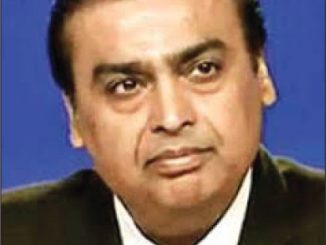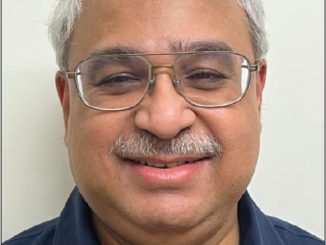
By Vinod R. Tanti, Chief Operating Officer, Suzlon Group
It is almost impossible for humans to aspire for growth without energy, as the latter fuels growth. Renewable energy is a cleaner, greener route to fuel growth without causing any environmental hazard. The total renewable energy capacity installed in India as of December 2016 stands at around 50 GW. Of this, over 28 GW, or 60 per cent, comes from wind energy generation. India continues to be the second largest wind market in Asia, and in 2015, overtook Spain to attain the fourth position in terms of cumulative installations globally. Factors that contribute to the success of the sector include technological advancements and the entrepreneurial spirit of the business community, especially customers, manufacturers and suppliers.
Customer investment outlook
Customers invest in capital goods to create wealth. They invest in the service of, and expected return from, the product. Two key criteria determine the investment decision: return on investment (RoI) and risk to reward ratio. The RoI is determined by the project cost, the annual energy produced (AEP) and the tariffs. The project risk is determined by the contract type and its execution. The wind energy segment offers a variety of solutions to customers, though most opt for full turnkey solutions. However, in situations where the turnkey option is not available, a few large players opt for the aggregation model and purchase the equipment from an original equipment manufacturer whilst insourcing or outsourcing some of the other parts, which include site and infrastructure, installation and operations, maintenance and services (OMS).
How it works. Why it works
In addition to the AEP and the project cost, tariffs and turbine-site compatibility are two factors that determine the potential RoI. The likely deviation between the potential and actual RoI is determined on the basis of the project execution and OMS implemented during the life cycle of the asset. This deviation may be negative or positive, and is often cyclical due to diurnal, seasonal and long-term wind cycles. The contributing factors can be simply compared to the life cycle of a human being. These are:
- Genes: The turbine design and site are a given at any point of time. The turbine-site compatibility determines the DNA, that is, the potential annual energy production.
- Birth: The process from manufacturing the equipment in the controlled environment of a factory to its installation and stabilisation in the natural environment of a wind farm determines the quality of birth.
- Lifestyle: The nurturing of the turbine in terms of its monitoring and servicing through its lifetime determines its health and longevity. The key indicator of turbine performance is AEP and one of the key factors driving AEP is machine availability (MA), which, in turn, is influenced by the mean time between failures (MTBF) and the mean time to repair (MTTR). Increasing MTBF and decreasing MTTR improves MA. Higher MA during high wind seasons yields higher AEP.
OMS: The customer’s custodian
The long life cycle of capital goods has the intrinsic tendency of wear and tear and hence, these products need periodic servicing and replacement of various components. Further, capital goods sometimes have scope for further optimisation through technological advancements or better alignment with operating conditions. OMS has a key role to play in all situations and stages of the asset life cycle as well as at both the turbine and wind park levels.
OMS mobilisation
The first OMS contract is generally signed at the time of finalising the equipment supply contract. The OMS machinery (team, systems and infrastructure) is geared up well before the turbine equipment reaches the site. The OMS team is familiarised with the product, trained to service it and sensitised to the signs to look out for within and beyond the articulated checklist. Infrastructure to cater to the needs of the turbines, the wind park and the OMS staff is set up at locations in proximity of the turbine installation for rapid service deployment.
Pre-commissioning checking and testing
The trained staff is certified for its competence as well as the ability to manage various possible scenarios. Some of the equipment may be inspected at the factory prior to installation and before commissioning. Post-commissioning tests are conducted or overseen and punch lists are created and cleared before the OMS team takes charge. At this stage, the maximum potential birth defects are attended to. The observations are fed into the incoming systems to reduce/eliminate future instances of avoidable turbulence. A similar exercise is carried out at the wind park level.
Lifetime servicing
There are three key aspects to lifetime servicing – scheduled maintenance, breakdown maintenance (BDM) and analytics.
- The turbine and infrastructure need to be attended to at regular intervals in terms of recalibration, change of consumables and replacement of parts. There are fixed schedules to this for every machine type and climatic zone, which are further refined to individual wind parks. Adherence to these schedules in letter and spirit is tantamount to a healthy lifestyle.
- Breakdowns do happen and the general causes are the genes, apart from the envelope of working conditions and gaps in a healthy lifestyle. Finding the root causes and implementing corrective action reduce the MTTR while working on preventive action increases the MTBF.
- Based on the root-cause analysis of the above two and the constant monitoring of the working conditions envelope, wind, other weather conditions and machine operations supervisory control and data acquisition, data gets converted into information. Combined with advancements in technology, there are various possible options that can help reduce negative deviation and increase the positive deviation surface. Business cases are tested towards net benefits and presented for implementation consideration.
The solution: Integrated business model OMS
The role of an integrated business model cannot be underplayed. Wherever a strong collaboration exists between the OMS, technology, supply chain and infrastructure development teams, there is greater opportunity to upgrade the turbine to reduce negative deviation and improve positive deviation. Negative deviations are reduced through predictive maintenance as well as by increasing the MTBF, reducing the MTTR and refining the control systems. Positive deviations, whilst increased by predictive maintenance, get further enhanced through repowering options via changes in generator capacities, blade design and hub height, etc. The same inputs also contribute towards designing better and more advanced turbines, infrastructure and support systems.
How OMS will trend in days to come
OMS has always been an important part of the overall project life cycle. With time, its criticality in higher generation has increased significantly. Advancements in digital technology and the internet of things are leading to improvements in turbine control systems, predictive maintenance and forecasting accuracy of power generation.
Multiple factors are leading to the steady growth of the wind energy segment in India. Technological advancements, availability of competitively priced equipment and a positive government policy framework have made wind energy the most favourable choice for capacity addition in the country. The National Action Plan for Climate Change has set a target to achieve 15 per cent renewable energy contribution by 2020. This calls for an estimated capacity addition of 7,000 MW per annum. The increased demand for energy, driven by the Make in India initiative, as well as the growing awareness of climate change risks has increased the attractiveness of the wind energy segment. As more and more people are choosing wind to meet their energy needs, the demand for domestically manufactured components such as towers, blades, generators and converters is growing. As a result, India is emerging as the fastest growing supply chain manufacturing hub for wind energy in the world. The viable environment and growing market have led to increased competition within the industry, and players are now looking at new ways to enhance the customer experience. One way to do this is to provide wind turbines to customers not just as a product, but as an end-to-end solution. Thus, OMS, with its application at every stage in the asset life cycle, is the key to make this possible.



